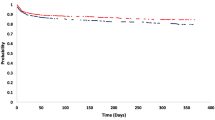Abstract
The use of intravenous thrombolytic therapy (ITT) in acute ischemic stroke (AIS) patients is still debated in China. We present the analysis of clinico-demographic retrospective data of 646 AIS patients that were treated by alteplase ITT at our hospital. The data collected included age, gender, education, income, drug use before disease onset, and awareness of stroke/ITT. The risk factors studied were hypertension, diabetes, hyperlipidemia, atrial fibrillation, coronary heart disease, cerebral infarction, transient ischemic attack, valvular heart disease, thyroid disease, migraine, asymptomatic carotid stenosis, family history of stroke, hyperhomocysteinemia, smoking, drinking, and gingivitis. Pre-ITT patient data included blood pressure and time from onset to hospital. Post-ITT patient data included National Institutes of Health Stroke Scale (NIHSS) scores, clinical outcome, revascularization, hemorrhage, healing rate, and 90-day mortality. Hospital management information included monthly ITT cases, discharges, bed turnaround times, length of hospital stay, bed utilization, drug ratio, massive cerebral infarction decompressive craniectomy, and social impact. Prognosis evaluation was based on post-ITT NIHSS and modified Rankin Scale (mRS) scores. We found that ITT success rate was 75.85 %, with a bleeding rate of 1.55 % and a 90-day mortality rate of 2.01 %. Overall, the data suggest that the ITT therapy was highly successful in AIS patients treated at our hospital.

Similar content being viewed by others
References
Zhao, D., Liu, J., Wang, W., Zeng, Z., Cheng, J., Liu, J., et al. (2008). Epidemiological transition of stroke in China: twenty-one-year observational study from the Sino-MONICA-Beijing Project. Stroke, 39, 1668–1674.
Liu, M., Wu, B., Wang, W. Z., Lee, L. M., Zhang, S. H., & Kong, L. Z. (2007). Stroke in China: epidemiology, prevention, and management strategies. Lancet Neurology, 2007(6), 456–464.
Zhu, Chen. (2008). The third national retrospective sampling survey of death causes. Beijing, China: Peking Union Medical College Press.
Jiang, Y., Li, X. Y., Hu, N., Huang, Z. J., & Wu, F. (2010). Epidemiologic characteristics of cerebrovascular disease mortality in China 2004-2005. Chinese Journal of Preventive Medicine, 2010(4), 293–297.
The National Institute of Neurological Disorders and Stroke rt-PA Stroke Study Group. (1995). Tissue plasminogen activator for acute ischemic stroke. New England Journal of Medicine, 1995(333), 1581–1587.
Penaloza-Ramos, M. C., Sheppard, J. P., Jowett, S., Barton, P., Mant, J., Quinn, T., et al. (2014). Birmingham and Black Country collaborations for leadership in applied health research and care investigations. Cost-effectiveness of optimizing acute stroke care services for thrombolysis. Stroke, 2014(45), 553–562.
Jauch, E. C., Saver, J. L., Adams, H. P, Jr, Bruno, A., Demaerschalk, B. M., Khatri, P., et al. (2013). Guidelines for the early management of patients with acute ischemic stroke: a guideline for healthcare professionals from the American Heart Association/American Stroke Association. Stroke, 2013(44), 870–947.
Boehme, A. K., Siegler, J. E., Mullen, M. T., Albright, K. C., Lyerly, M. J., Monlezun, D. J., et al. (2014). Racial and gender differences in stroke severity, outcomes, and treatment in patients with acute ischemic stroke. Journal of Stroke and Cerebrovascular Diseases, 2014(23), e255–e261.
Strbian, D., Sairanen, T., Silvennoinen, H., Salonen, O., & Lindsberg, P. J. (2014). Intravenous thrombolysis of basilar artery occlusion: trombus length versus recanalization success. Stroke, 2014(45), 1733–1738.
Rha, J. H., Shrivastava, V. P., Wang, Y., Lee, K. E., Ahmed, N., Blubmki, E., et al. (2012). Thrombolysis for acute ischaemic stroke with alteplase in an Asian population: results of the multicenter, multinational Safe Implementation of Thrombolysis in Stroke-Non-European Union World (SITS-NEW). International Journal of Stroke,. doi:10.1111/j.1747-4949.2012.00895.x.
Hacke, W., Kaste, M., Fieschi, C., von Kummer, R., Davalos, A., Meier, D., et al. (1998). Randomised double-blind placebo-controlled trial of thrombolytic therapy with intravenous alteplase in acute ischaemic stroke (ECASS II). Lancet, 1998(352), 1245–1251.
Hacke, W., Kaste, M., Bluhmki, E., Brozman, M., Dávalos, A., Guidetti, D., et al. (2008). Thrombolysis with alteplase 3 to 4.5 hours after acute ischemic stroke. New England Journal of Medicine, 359, 1317–1329.
IST-3 collaborative group. (2012). The benefits and harms of intravenous thrombolysis with recombinant tissue plasminogen activator within 6 h of acute ischaemic stroke (the third international stroke trial IST-3: a randomised controlled trial). Lancet, 2012(379), 2352–2363.
Tandberg, A. E., Naess, H., & Thomassen, L. (2007). Predictors for recanalization after intravenous thrombolysis in acute ischemic stroke. Journal of Stroke and Cerebrovascular Diseases, 2007(16), 21–24.
Wardlaw, J. M., Murray, V., Berge, E., del Zoppo, G., Sandercock, P., Lindley, R. L., et al. (2012). Recombinant tissue plasminogen activator for acute ischaemic stroke: an updated systematic review and meta-analysis. Lancet, 2012(379), 2364–2372.
Acknowledgments
This study was supported by Early Prevention and Treatment and Clinical Standardized Research for Stroke (13ZCZDSY01600) in the Key Project of Tianjin Scientific and Technological Support Program. We are also thankful to all colleagues from Departments of Emergency, Neuroradiology, and Clinical Laboratory at Huanhu Hospital for their support and cooperation.
Author information
Authors and Affiliations
Corresponding author
Electronic Supplementary Material
Below is the link to the electronic supplementary material.
Rights and permissions
About this article
Cite this article
Zhang, PL., Wang, YX., Chen, Y. et al. Use of Intravenous Thrombolytic Therapy in Acute Ischemic Stroke Patients: Evaluation of Clinical Outcomes. Cell Biochem Biophys 72, 11–17 (2015). https://doi.org/10.1007/s12013-014-0394-6
Published:
Issue Date:
DOI: https://doi.org/10.1007/s12013-014-0394-6




